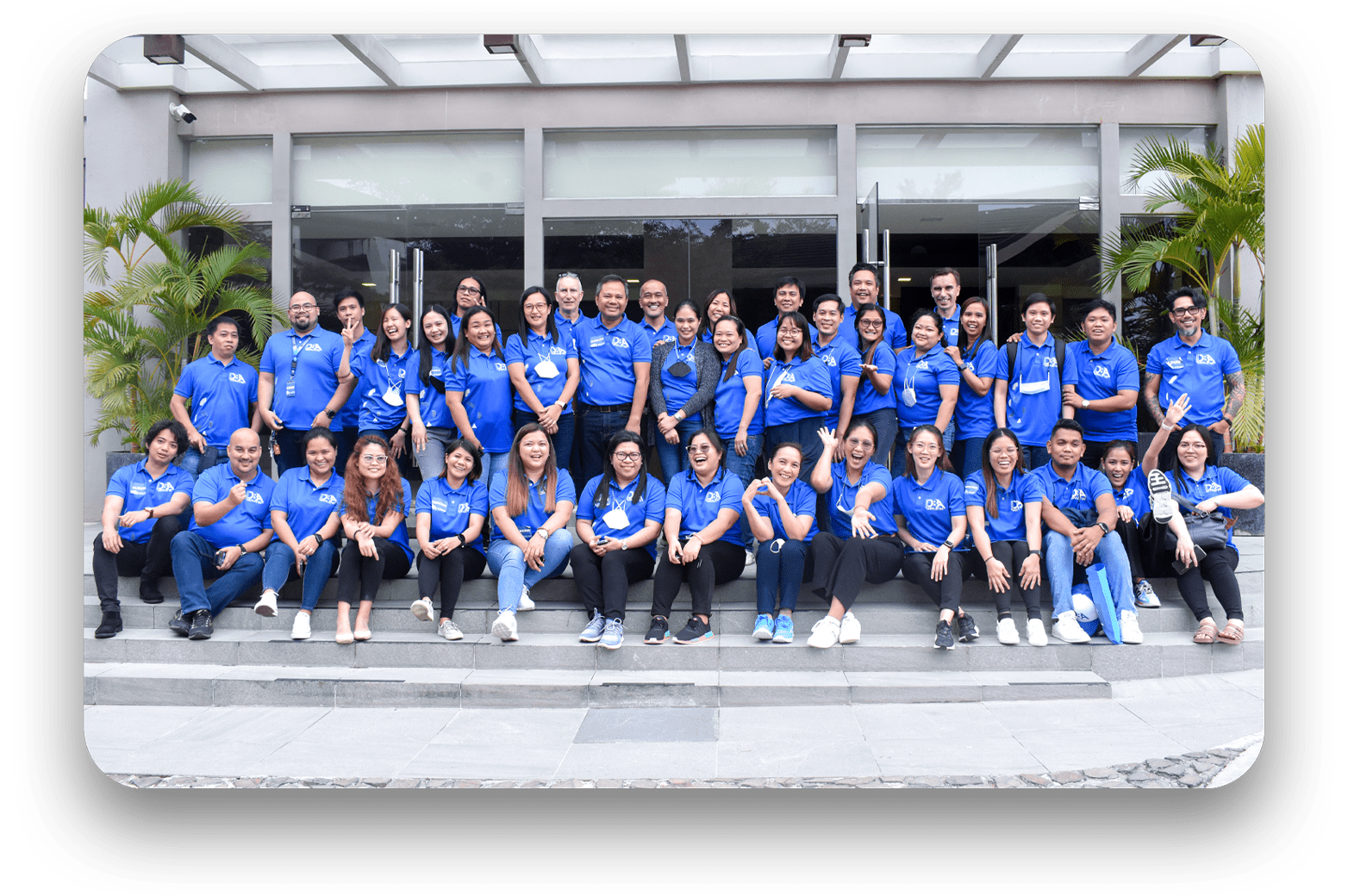Quiet quitting has become a prominent concept in discussions about the modern workplace. It describes employees doing only the minimum and nothing more.
As a business leader, spotting quiet quitting signs early can help address underlying issues before they escalate. This can also allow businesses to implement strategies to boost employee engagement and prevent further disengagement.
Quit quitting highlights a shift in how people view work engagement and attitudes. Notably, this trend is famous among Generation Z, but it affects all generations. Nevertheless, the subtle yet impactful shift in the attitude of employees can significantly affect organisational productivity, morale, and overall success.
But how can we stop before it is too late? Keep reading to discover key indicators of quiet quitting and effective strategies to address them before it is too late!
What's in the blog?
Understanding Quiet Quitting

Quiet quitting is a lingo that started gaining attention in social media first. In reality, it is a phenomenon where employees consciously decide to do the bare minimum required of their roles without formally resigning. This is basically going away from the traditional principle of being required to always go “above and beyond” at work. Instead, employees choose to limit their efforts to the minimum of what their job description and contractual obligations state.
The phrase “quiet quitting” was first used by economist Mark Boldger in the Economics Symposium on “Diminishing Ambitions” in Venezuela, conducted at Texas A & M University in September 2009. This was used to describe the diminishing motivation and enthusiasm at work. However, it was not until Bryan Creely used the term in one of his TikTok and YouTube videos in 2022 that it became widespread.
Quiet quitting shares similarities with the concept of Tang Ping, which means to lay flat. The term was popularised in China to describe a laid-back approach to work and life. This reflects the preference among Gen Z and Millennials for a more balanced and less intense lifestyle. Moreover, this mindset emerged as a passive response to the demanding demanding 996 working schedule.
Quiet Quitting or Disengagement?
In a sense, quiet quitting is a misnomer, as it is not truly quitting. However, it is a passive form of resistance or rejection of their current work environment. In fact, a study about quiet quitting found most quiet quitters can be labeled as “not engaged” in their work. Similarly, 54% of quiet quitters worldwide openly stated that they are just disengaged in their work.
This suggests that employees who engage in quiet quitting do not necessarily quit their jobs immediately. Instead, they disengage slowly from work-related activities over time. Furthermore, quiet quitters simply resist passively rather than actively seek new opportunities.
Spotting Quiet Quitting Signs
Spotting quiet quitting signs can be challenging, as the behavior is often subtle and gradual. But several indicators can help you recognise this trend within your organisation. According to Joe Galvin, a subject matter expert on this issue, the telltale signs of quiet quitting are:
Quiet quitting is not actually quitting, but a passive form of resistance or rejection of the current work environment.
1. Chronic Detachment
Quiet quitters exhibit a persistent lack of enthusiasm. In addition, there is little to no investment in their work. They fulfill their basic duties, but without passion or initiative. This manifests as decreased productivity, reluctance to take on challenges, and a general apathy towards their role as well as the company. While this does not have any issue, this disengagement can significantly drag down team dynamics and workplace morale.
2. Meeting Only Minimum Performance Standards
People who are quietly quitting often resort to just meeting the bare minimum requirements of their job. While they complete their assigned tasks, they do so without extra effort or initiative. These employees no longer strive for excellence or exceed expectations in their work. Instead, they focus solely on doing just enough to maintain their position. Consequently, they avoid any additional responsibilities or challenges.
3. Isolation from Team Members
Quiet quitters tend to distance themselves from their colleagues as well as team members. They may become less engaged in team meetings and avoid social interactions. Also, they generally withdraw from the collaborative aspects of their job. This isolation can further contribute to a sense of disengagement. Together with a lack of investment in their tasks, the overall success of the organisation is affected.
4. Withdrawal from Non-Essential Interactions
While non–work-related interactions are deemed non-essential, they are still important, especially in building rapport. Hence, quiet quitters often limit their involvement in non-essential work-related activities. This generally includes attending optional training sessions or engaging in company events. They typically avoid commitments that involve them connecting with their colleagues.
5. Attendance With Zero Participation
Although quiet quitters still show up for work, their level of participation and engagement during the workday is minimal. They become evidently physically and mentally checked out. This is manifested by their little to no contribution to discussions, decision-making, or problem-solving. Their disengagement can have a ripple effect on team dynamics and overall productivity.
6. Increased Workload for Teammates
As quiet quitters withdraw from their responsibilities, their workload often gets redistributed to their colleagues. This shift can lead to an increased burden on their teammates, who must pick up the slack as well as take on additional tasks to ensure everything gets done. This situation can also foster resentment and strain team dynamics further.

Why Employees Resort to Quiet Quitting
Indeed, there are countless reasons people opt for quiet quitting as an alternative to outright leaving their job. There are workers who prefer to continue receiving a paycheck and maintain employee benefits while discreetly seeking new opportunities. On the other hand, some just want to let things be. However, disengagement can stem from numerous underlying factors. Here are the most common reasons:
Burnout and Overload:
Chronic stress and excessive workloads lead to exhaustion. This makes it without a doubt, challenging to maintain enthusiasm and engagement. As a result, 84% of professionals do not feel passionate about their work. For such reasons, employees may feel unable to keep up, leading to a gradual withdrawal.
Recognition and Growth Stagnation:
A significant reason for quiet quitting is the lack of opportunities and recognition. Employees may disengage when they feel undervalued or stuck in a dead-end job. A reason an employee also engage in quiet quitting is the lack of opportunities and recognition. Recent studies show that surprisingly, 75% of Gen Z respondents prefer to be recognised in the workplace. This sentiment is shared across other generations, with Gen X showing the highest preference for recognition at 85%.
Poor Leadership and Toxic Culture:
Employees can tolerate their jobs, but the work environment is a significant factor. In spotting quiet quitting signs, reflect if your people lack support or have unclear work expectations. Moreover, a toxic atmosphere can push valuable employees to quietly quit. Reports also noted that quiet quitting is a leadership issue, above anything.
Mismatch:
Misalignment between personal values and organisational goals can also lead to dissatisfaction. When employees feel their values are not reflected in the company’s mission or culture, they may become unhappy. Aside from that, they can opt to withdraw from active engagement. This mismatch can also be seen in compensation. If an employee’s current pay does not align with their perceived value or contributions to the workplace, they may feel undervalued and demotivated.
Quiet quitters do not actually quit their jobs but disengage slowly from work-related activities over time, rather than actively seek new opportunities.
I Have a Quiet Quitter, Now What?
After spotting quiet quitting signs, prompt action is essential to prevent further escalation. Addressing this issue requires a multifaceted approach. These are some strategies to consider:
Address the Issue
As quiet quitters withdraw from their responsibilities, their workload often gets redistributed to their colleagues. This shift can lead to an increased burden on their teammates, who must pick up the slack as well as take on additional tasks to ensure everything gets done. Nevertheless, this situation can foster resentment and strain team dynamics further.
Start a Conversation
Encourage managers and staff to communicate honestly and openly. Additionally, be proactive in providing constructive feedback that can help improve employee performance. Having open dialogues present opportunities for collaborative problem-solving. Consequently, it allows employees to share their thoughts without fear. This approach helps identify areas for improvement and establishes a culture of trust within the organisation.
Recognise Efforts
Implement a robust employee recognition program that celebrates your people. For instance, you can reward team members who have contributed to projects. This can include monetary bonuses or promotions. Non–monetary rewards such as public acknowledgment, professional development opportunities, or additional time off are good options too. By doing this, you can cultivate a work environment that retains valuable employees and encourages ongoing development.
Leverage Technology
Employing technology is a great strategy for maintaining a balanced workplace, particularly by ensuring fair workload distribution among employees. These technologies enable real-time workload adjustments as well as provide platforms for employees to express concerns about their tasks. This allows employees to make informed decisions to achieve workload equity. Moreover, this can significantly contribute to a balanced and positive work environment.
Foster a Positive Environment
Implement policies and practices that support an overall healthy work-life balance with boundaries. Encourage employees to take breaks, prioritise self-care, and maintain a sustainable work-life integration. Then, cultivate a work culture that values collaboration, innovation, and employee empowerment. Furthermore, organise team-building activities, social events, and opportunities for employees to connect with one another beyond their work responsibilities.
Bring New Perspectives
Some organisations explore supplementing their workforce with external talent. This can indeed bring fresh perspectives and expertise that can potentially boost team morale and innovation. By integrating insights from an outsourced partner, organisations can relieve workload pressures on their employees. Through this, their people can focus on tasks that align more closely with their strengths and interests.
Your Trusted Partner

Running a business is no joke—we understand that. We also know that spotting quiet quitting signs is difficult when you have to juggle multiple responsibilities.
As a professional services provider for over a decade, DBA can significantly help you navigate the challenges of managing a business. Our experienced team can assist you and your employees. Through this, you can focus on growing your business and ensuring its long-term success. Trust DBA to provide the support and guidance you need to thrive in today’s competitive market.

Aureen Kyle Mandap, DMP

Aureen Kyle Mandap, DMP
Share


DBA’s Global Head of Sales and Marketing, Jason Ryan recently attended the Intrigue MAdVerse Conference in Melbourne, where key insights around the evolving concept of “value” were shared. His takeaway: value is not just a concept—it’s an experience that is deeply human. At DBA, we are committed to embracing innovation while staying rooted in empathy, creativity, and connection to build a future where technology and humanity thrive together. Read more of his insight here!






© 2024 DBA. All Rights Reserved.






